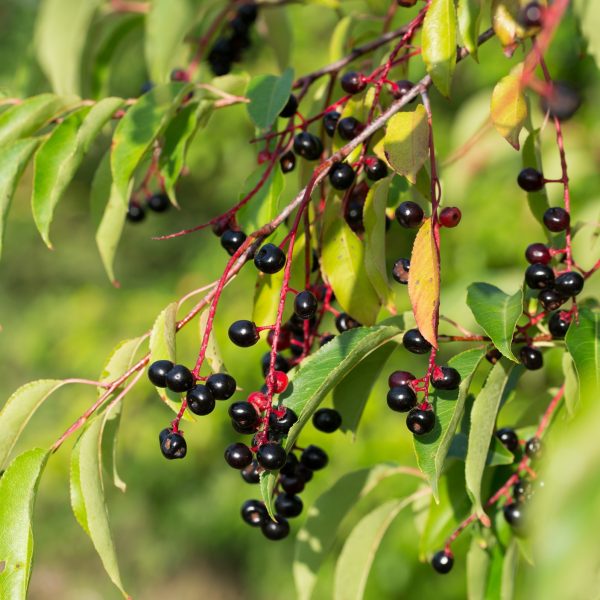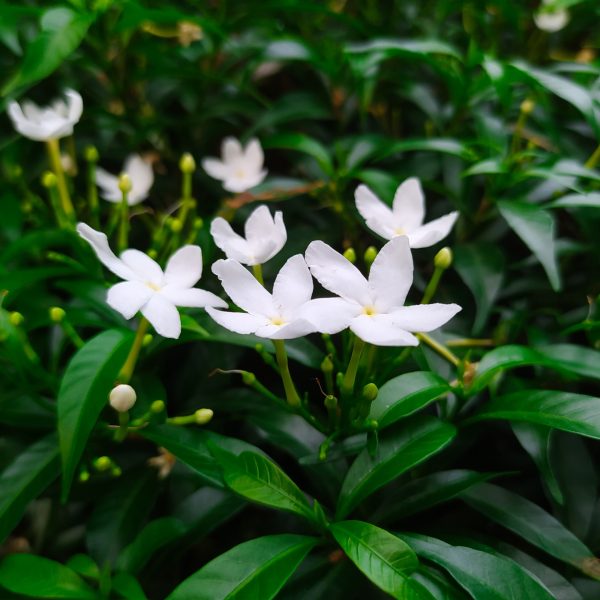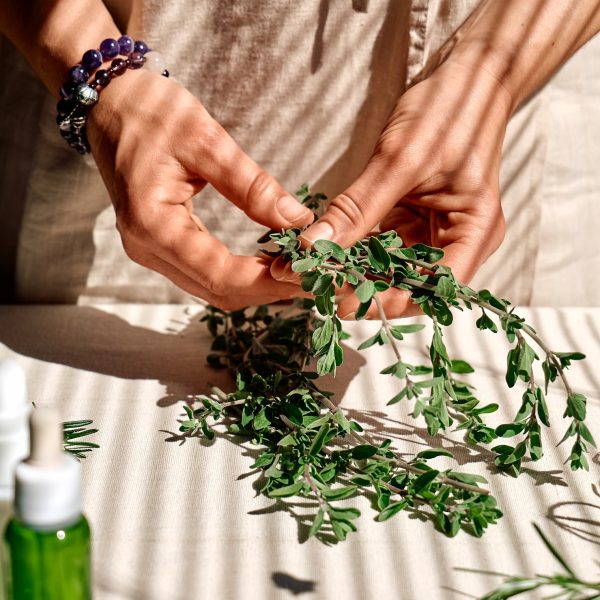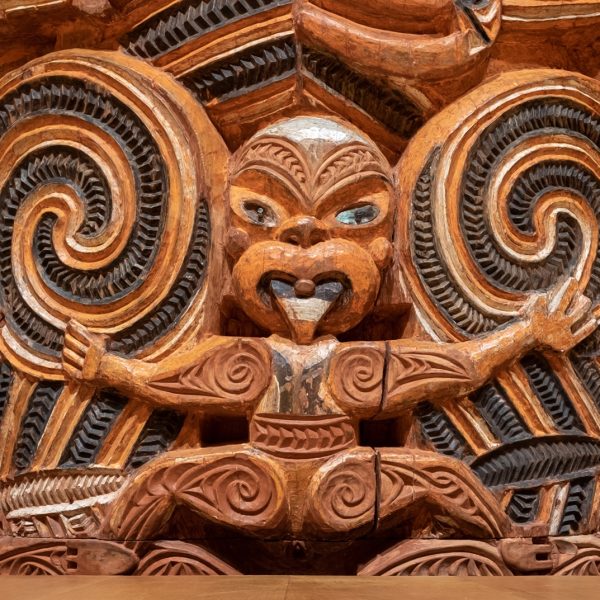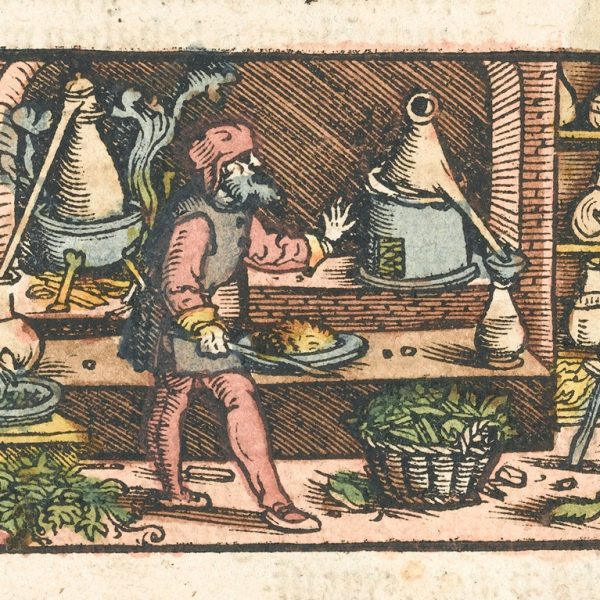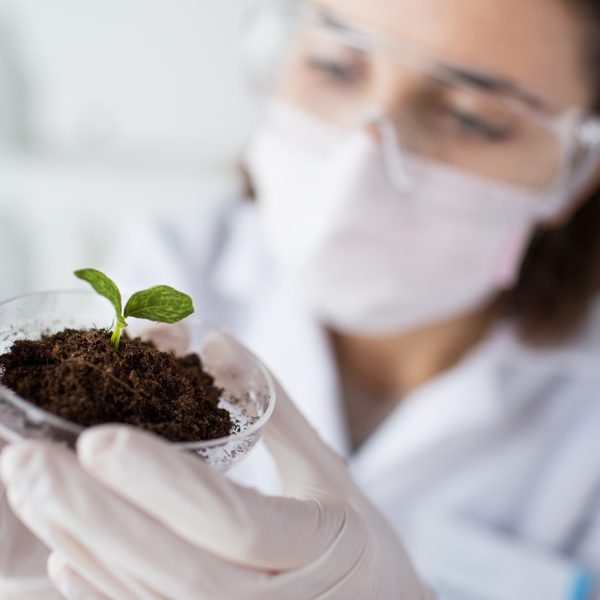-
How does it feel?
Mulberry leaves have a subtle, earthy and green flavour, and are often brewed into a tea or made into soups for their earthy taste. The berries are balanced between sweet and tart, reminiscent of blackberries or figs. The berries are rich in antioxidants and polyphenols demonstrated by the vibrant colour and sweet flavour, and are the only part that have a sour quality. The leaf, fruit and root may all be described as cooling and help to immediately relax the tissues, suggestive of their anti-inflammatory action. The leaf, twig and root are also bitter in flavour.
-
What can I use it for?

Mulberry (Morus alba) The leaves are used for the early stages of a respiratory tract infection accompanied with a dry cough, dizziness, headache and inflamed eyes. They can also be used for eye infections that are not accompanied by a cough. Research has shown the leaves have hypoglycaemic actions indicating them for disorders such as type 2 diabetes and obesity (1).
The twigs are used for joint pain, numbness and swelling. They also have antipruritic actions and help to relieve sudden itching.
The root bark is also used for coughs which have entered a deeper level, presenting with phlegm obstruction and wheezing. Its ability to drain fluid also allows it to sometimes be used for swelling and difficulty urinating. The whole root is used less frequently but sometimes employed for spasms, hypertension, eye and disorders and genital itching.
The fruit is used to nourish fluids, alleviating symptoms of dizziness, soreness of the lower back and knees, insomnia and constipation. This is the main part used in Western herbalism to make laxative and expectorant syrups.
-
Into the heart of mulberry

Mulberry (Morus alba) Mulberry is intimately connected to the concept of change. In the Classic of Mountains and Seas, a book of pre-Qin mythological geography, a great mulberry tree called Fusang “Supporting Mulberry” is said to be found in the far eastern sea with roots below the water and ten suns hanging on its branches, one of which rises to the upper branches each day of the ancient 10 day week (1). It therefore represents a kind of world-tree that unites Heaven and Earth and governs the cycles of time. Since at least the 4th century CE, this has been reflected in cultural idioms such as “vast seas changing to mulberry fields” which is used to refer to great change over time (2).
Medicinally, this is reflected in its different uses depending on the part being used. This has been present since the earliest pharmacopoeia, The Divine Farmer’s Materia Medica Classic (1st – 2nd century CE), where different properties are given to the root bark, leaves and even mushrooms that grow on the bark (3,4).
This connection to change is also evident in Europe, where Culpepperwrote that it was ruled by Mercury, making its effects as variable as him, with different medical properties based on which part of the tree was used (5). The black mulberry (Morus nigra) was preferred in Europe and became a popular tree to cultivate in monasteries from the 11th century onwards due to its many medicinal uses (6).
Modern research has also centred around its ability to mitigate change, suggesting it can support metabolic functions by balancing blood sugar and cholesterol levels, reducing oxidative stress and modifying the gut microbiome to prevent type 2 diabetes, obesity and cardiovascular disease (7). The leaves and fruit are of particular interest for this application (8,9).
-
Traditional uses

Mulberry root (Morus alba) The leaves, twigs, root bark, whole root and fruits are used in medicine for different purposes. These indications are still used in Chinese medicine but the traditional uses have almost entirely disappeared from Western herbal usage and are now found only in historical reference books.
In Chinese medicine, the leaves, along with most aerial parts, enter the Lungs and Liver to treat superficial coughs and fevers or redness of the eyes (10). It is important to differentiate whether this is caused by heat, with accompanying symptoms like sore throat, fever and aversion to warmth, from cold patterns where there will be more chills, tight muscles and runny nose, for which a different herb would be used. In Western herbalism, the leaves were used as an antidote for poisoning from snake bite or aconite, bites from harvest spiders, or, when beaten with vinegar or oil, for burns (5,11). They could also stop bleeding of the mouth, nose or from haemorrhoids.
In Chinese medicine, the small, thin nature of the twigs is seen as being able to enter the channels and unblock them, entering the Liver whose responsibility is the smooth flow of qi. This makes it best suited for treating arthritic pain and numbness due to obstruction of the channels (Wind-Damp Bi) but can also treat sudden bouts of itching (12). The twigs also have a neutral temperature and so can be used for cold and heat disorders with the correct accompanying herbs. In Western herbalism, a decoction of the twigs and leaves was used as a wash for mouth and toothache (5,11).
In Chinese medicine, the berries are sweeter and sour, aiding in the supplementation of body fluids, especially yin and Blood of the Liver and Kidneys (13). This can treat symptoms such as dizziness, tinnitus, backache, premature graying of hair, insomnia or dream disturbed sleep, thirst and constipation when they are due to a loss or insufficiency of necessary fluids. In Western herbalism, the ripe berries have a traditional use for stimulating a bowel movement whilst the unripe berries bind it, especially used for regulating menstruation (5,11). The juice was also used for syrups to aid in all kinds of inflammation, especially those in the mouth, throat or palate. It is also this part which maintained a medicinal use into the modern era, although only as an adjuvant in expectorant and laxative syrups, or as a gargle for a sore throat (14).
In Chinese medicine, the root bark treats cough, similar to the leaves. Being a deeper part of the plant, it focuses on coughs that have penetrated to a deeper level with phlegm obstructing the lungs [15]. In Chinese physiology, the Lungs have an influence on water metabolism and the skin so the root is also able to drain fluid in the lungs and unblock urination. In Western herbalism, the root bark was used to kill worms (5,11).
The whole root is used less frequently but is used in Chinese medicine for disorders of excess in the Liver including tremors or convulsions, muscle spasms and pain, hypertension, red eyes and irritation of the genitals (16). In Western herbalism, a juice extracted from the root and left to harden overnight was used to help toothache, dissolve knots and purge the belly (5,11).
-
Traditional actions
Herbal actions describe therapeutic changes that occur in the body in response to taking a herb. These actions are used to express how a herb physiologically influences cells, tissues, organs or systems. Clinical observations are traditionally what have defined these actions: an increase in urine output, diuretic; improved wound healing, vulnerary; or a reduction in fever, antipyretic. These descriptors too have become a means to group herbs by their effects on the body — herbs with a nervine action have become the nervines, herbs with a bitter action are the bitters. Recognising herbs as members of these groups provides a preliminary familiarity with their mechanisms from which to then develop an understanding of their affinities and nuance and discern their clinical significance.
Western actions
-
Traditional energetic actions
Herbal energetics are the descriptions Herbalists have given to plants, mushrooms, lichens, foods, and some minerals based on the direct experience of how they taste, feel, and work in the body. All traditional health systems use these principles to explain how the environment we live in and absorb, impacts our health. Find out more about traditional energetic actions in our article “An introduction to herbal energetics“.
Chinese energetics
Ayurvedic energetics
-
What practitioners say

Mulberry (Morus alba) Respiratory
One of the main uses of mulberry in Chinese medicine is for respiratory conditions. The leaves, as the lightest and highest part of the tree, are best for superficial infections affecting the upper body such as a cough with fever, sore throat and red eyes (10). The root bark, coming from a deeper part of the tree, helps with pathogens lodged at a deeper level causing phlegm congestion and wheezing (15).
Musculoskeletal
Mulberry twigs are used in Chinese medicine for the alleviation of joint pain and numbness. This is due to their small, thin nature that sees them as able to enter the narrow channel pathways and assist in clearing them from blockages and assist in the smooth flow of qi (12). This is supported by the presence of anti-inflammatory constituents found in the branches (17,18).
Urinary
The root bark can also be used to assist with urinary disorders. Since it is able to drain fluid from the lungs, it can also assist with fluid retention, oedema and swelling elsewhere (15).
Metabolic
Recent studies have looked at the ability of mulberry leaves and fruits to alleviate metabolic disorders such as type 2 diabetes, obesity and cardiovascular disease. The mechanisms need further study but its antidiabetic properties are related to lowering blood glucose by inhibiting α-glucosidase enzyme, preventing the breakdown of carbohydrates into simple sugars necessary for absorption, protecting pancreatic cells and lowering insulin resistance (19,20). Meanwhile, its effects on fat metabolism are related to reducing lipid absorption and accumulation, modifying adipocyte formation and signalling, triggering the browning of adipose tissue and improving gut microbiota which directly contribute to obesity, in addition to the glucose lowering effects that are also a factor in overall calorie management (21, 22). Its antioxidant capacity also helps in both conditions by reducing inflammation and the oxidation of lipids.
-
Research

Mulberry (Morus alba) Advances on antiviral activity of Morus spp. plant extracts: Human Coronavirus and virus-related respiratory tract infections in the spotlight
The recent coronavirus pandemic caused many researchers to look for antiviral properties of herbal medicines, and the traditional use of mulberry leaf and root bark in Chinese medicine was one of those considered. One study found that Morus alba leaf water-ethanol extracts had an antiviral effect that was superior against enveloped human coronavirus than non-enveloped picornavirus which they suggested was due to the interaction of the constituents with the binding capacity of ligands on the envelope.
The root bark of Morus alba and the flavonoid constituents inhibit airway inflammation
Another study found that the root bark inhibited bronchitis-like symptoms, determined by TNF-α production, inflammatory cell infiltration and histological observation. Several flavonoid components (kuwanone E, kuwanone G and norartocarpanone) also inhibited IL-6 in lung epithelial cells and nitric oxide production in lung macrophages (25).
Anti-inflammatory activities of compounds from twigs of Morus alba
This study identified nine compounds which demonstrated anti-inflammatory activity, three of which acted on the expression of both inducible nitric oxide synthase (iNOS) and cyclooxygenase-2 (COX-2) protein (17). Following that, research also subsequently found another three constituents which they proposed could be used for quality control purposes (18).
Effects of mulberry fruit (Morus alba L.) consumption on health outcomes: A mini-review
This review found the fruits to be high in polyphenols, the most important class of which were anthocyanins. The effects of these compounds were reported to lower cholesterol and blood sugar levels whilst increasing insulin sensitivity giving them a potential role in management of type 2 diabetes mellitus and obesity. Their antioxidant properties also helped to protect cells in models of tumour formation, liver injury, brain injury and other models of oxidative stress induced cell death. However, they caution that most studies are in cell or animal models and, while a correlation between mulberry consumption and improved health have been observed, further study is needed to understand how this occurs in humans (9).
Morus alba: Natural and valuable effects in weight loss management
Reviewing the evidence for the use of mulberry in the management of obesity, this study determined that various parts of mulberry could contribute to a safe and effective weight loss program (22). Its main mechanisms were identified as contributing to calorie deficit, reducing postprandial glucose levels and lipid accumulation, improving insulin resistance, modulating adipocyte formation and signalling, reducing inflammation through antioxidant activity and modulation of the gut microbiota.
Calorie deficit and the reduction of postprandial glucose were achieved through the inhibition of digestive enzymes, especially α-glucosidase and pancreatic lipase, reducing the absorption of sugars and fats in the digestive tract; insulin resistance was improved through increasing GLUT4 expression and enhancing mitochondrial function; adipocyte formation was inhibited by inducing apoptosis of immature adipocytes before they reached maturity; inflammation was reduced by modulating adipokines adiponectin and leptin, reducing adipose tissue related inflammatory signalling.
The antioxidant effects were attributed to an increase in cellular antioxidant enzyme production which also contributed to its anti-inflammatory effect; while the gut microbiota became more diverse, especially in the bacterial species whose deficit is associated with metabolic disorders. This was supported by other papers which reviewed the evidence for the use of mulberry extracts in diabetes and obesity management (19,20,21,23).
-
Did you know?
The mulberry tree has been an integral part of Chinese culture and livelihood for 5000 years where the white mulberry (Morus alba) has been cultivated for its use in making paper and as a food source for silk worms (26).
Additional information
-
Botanical description
White mulberry (Morus alba) is an 8–12 m deciduous tree, spreading wider than 8 m with ovate to heart-shaped, glossy, toothed green leaves that turn pale yellow in autumn. Flowers are insignificant and followed by fruits that emerge as pale green catkins in late spring and early summer, developing into edible, flavourless raspberry-like fruits that begin white and develop to reddish-pink or near-black (44). Common mulberry (Morus nigra) is broad-crowned with dark purplish-red fruits with a stronger, more tart flavour that emerge in summer (45).
-
Common names
- White mulberry
- Black mulberry
- Common mulberry
- Silkworm mulberry
-
Safety
There are no known issues regarding safety, including while pregnant or breastfeeding, but this is mainly due to lack of human studies. Its long history of consumption by humans and the animal data available suggest there is little concern for safety. However, in the absence of reliable data, we recommend caution and consulting with a medical herbalist prior to use in pregnancy (7).
The most common side effects reported in the literature relate to consuming mulberry leaf extracts for the management of diabetes or obesity and included nausea, bloating, abdominal cramps, flatulence, loose stools, constipation and proteinuria which affected approximately 50% of patients but passed over time without incident (20,21,22).
-
Interactions
There are no known interactions with medication but its effects on blood sugar suggest a theoretical interaction with diabetic medications, so caution is advised in these circumstances (29).
-
Contraindications
Caution is generally advised in conditions that are aggravated by cold due to its generally cooling nature. The main exception for this is the twigs, which can be used for arthritis that is worse for cold by combining with other warming anti-inflammatory herbs such as cinnamon (Cinnamomum verum) (12). Overconsumption of the fruits should be avoided in those with weak digestion, loose stools or diarrhoea (13).
-
Preparations
- Infusion (leaves)
- Decoction (root bark, twigs, roots)
- Syrup (fruit)
-
Dosage
- Infusion/decoction: Leaves 3–12 g; twig 9–15 g; root bark 6–12 g (30); fruit 15–30 g (13); root 15–30 g (16)
- Other preparations: The fruit is often made into a paste using 15–60g (13)
-
Plant parts used
- Leaves
- Twigs
- Fruits
- Root bark
- Roots
-
Constituents
Traditional applications vary based on which part is used, and several notable constituents have been isolated from different parts. Thorough reviews of these can be found in the literature but some notable constituents include (7,31,32) :
- Alkaloids: 1-deoxynojirimycin — An ɑ-glucosidase inhibitor and antiviral found in mulberry leaves, root and root bark (32,33).
- Anthocyanins: Cyanidin glucosides (cyanidin-3-O-glucoside) — Found in the fruits, cyanidin is a potent sirtuin-6 activator that is associated with improved DNA repair, metabolism, inflammatory response reduction and lifespan (34).
- Coumarins: Umbelliferone — Isolated from the bark, it has displayed anti-inflammatory properties (35).
- Phenolic acid, Cinnamate ester, Chlorogenic acid: Found mainly in the leaves and partly responsible for its hypoglycemic effects (36).
- Polyphenol, Flavanol, Morin, Antioxidant: Isolated from the bark and root bark (35)
- Prenylated flavonoid polyphenols: Moralbanone — antiviral agent isolated from the root bark (37); kuwanon G — antibacterial agent isolated from the root bark (38); morusin — anti-inflammatory agent found in the roots and branches (18)
- Stilbenoid polyphenols: Mulberroside A — diglycoside of oxyresveratrol with anti-inflammatory, antioxidant, hypoglycemic and skin whitening properties, found mainly in the roots and twigs (39,40); resveratrol — found mainly in the fruit, this is the compound made famous for giving grapes their antioxidant properties, but also has antimicrobial and antibiofilm properties (41); oxyresveratrol — found in the branches which exert an anti-inflammatory and antioxidant effect (42)
- Vitamins: Vitamin C — A known antioxidant and immune enhancer that is found in the fruit and in lesser quantities in the leaves (41,43)

-
Habitat
Mulberry is native to China and southwest Asia but has now been widely cultivated across the globe.
-
Sustainability
 White mulberry is listed as least concern on the IUCN Redlist, and black mulberry is listed as data deficient (45,46). However, mulberry species are known to be resistant to significant environmental stressors, and are not currently at risk from overharvesting (47).
White mulberry is listed as least concern on the IUCN Redlist, and black mulberry is listed as data deficient (45,46). However, mulberry species are known to be resistant to significant environmental stressors, and are not currently at risk from overharvesting (47). Habitat loss and over-harvesting from the wild are two of the biggest threats faced by medicinal plant species. There are an increasing number of well-known herbal medicines at risk of extinction. We must, therefore, ensure that we source our medicines with sustainability in mind.
The herb supplement industry is growing at a rapid rate and until recent years a vast majority of medicinal plant produce in global trade was of unknown origin. There are some very real and urgent issues surrounding sustainability in the herb industry. These include environmental factors that affect the medicinal viability of herbs, the safety of the habitats that they are taken from, as well as the welfare of workers in the trade.
The botanical supply chain efforts for improved visibility (transparency and traceability) into verifiably sustainable production sites around the world is now certificated through the emergence of credible international voluntary sustainability standards (VSS).
Read our article on Herbal quality & safety: What to know before you buy and Sustainable sourcing of herbs to learn more about what to look for and questions to ask suppliers about sustainability.
-
Quality control
Herbal medicines are often very safe to take; however, their safety and efficacy can be jeopardised by quality issues. So, it is important to buy herbal medicines from a reputable supplier, from sources known to test their herbs to ensure there is no contamination, adulteration or substitution with incorrect plant matter, as well as ensuring that recognised marker compounds are at appropriate levels in the herbs.
Some important quality assurances to look for are certified organic labelling, the correct scientific/botanical name, and the availability of information from the supplier about ingredient origins. A supplier should be able to tell you where the herbs have come from, what contaminants are not in the herb, and what the primary compounds are.
-
How to grow
Mulberries prefer a sunny, sheltered planting spot with plenty of room to grow. Plant from autumn to spring, in deep, moisture-retentive but well-drained soil, enriched with well-rotted manure or garden compost. In its early years, support with a sturdy stake and water from spring to autumn until established, after which they should need little maintenance (48,49,50).
-
Recipe

Mulberry (Morus alba) Mulberry leaf and chrysanthemum drink
Mulberry leaf is often combined with other cooling, exterior releasing herbs in Chinese medicine to treat acute, hot-type respiratory tract infections. These often include other flowers and leaves such as chrysanthemum flowers, mint leaves and forsythia capsules, such as in the classic 1798 recipe “Mulberry leaf and chrysanthemum drink” that forms one of the cornerstones of treating “Warm Diseases” in Chinese medicine (27).
Ingredients
- 7.5 g mulberry leaves
- 2.5 g chrysanthemum flowers
- 3 g mint leaves
- 5 g forsythia capsules
- 6 g reed rhizome
- 6 g balloon flower root
- 2.5 g liquorice root
Instructions
- Decoct in 400 ml of water to make two cups.
- Do not boil for more than 20 minutes.
- Take two doses daily.
Drain the White Powder
In cases of a more chronic, dry cough and wheezing that seems to be lurking deep within the patient and depleting their fluids, the root bark can be combined with other barks such as goji root bark, as in the 12th century recipe Drain the White Powder (28).
Ingredients
- 30 g mulberry root bark
- 30 g goji root bark
- 3 g liquorice root
Instructions
- Grind the ingredients into a powder
- Add a pinch of white rice
- Boil in two small cups of water for seven minutes and take before meals.
- Alternatively, often prepared today as a decoction with the ingredients reduced to ⅓ of their original amount.
-
References
- Chen S, Xi M, Gao F, et al. Evaluation of mulberry leaves’ hypoglycemic properties and hypoglycemic mechanisms. Frontiers in Pharmacology. 2023;14. https://doi.org/10.3389/fphar.2023.1045309
- Fruehauf H. Correlative Cosmology: Energetics of the Second Month of Spring and Large Intestine Function. 2009. https://classicalchinesemedicine.org/correlative-cosmology-second-month-spring-large-intestine/
- Schottenhammer A. The “China Seas” in world history: A general outline of the role of Chinese and East Asian maritime space from its origins to c. 1800. JMIC. 2012; 1(2): 63-86. https://doi.org/10.1016/j.imic.2012.11.002
- 神农本草经 Shen Nong Ben Cao Jing (Divine Farmer’s Materia Medica Classic). https://ctext.org/wiki.pl?if=gb&chapter=10407&remap=gb
- Yang SJ. The Divine Farmer’s Materia Medica. Blue Poppy Press, Inc.: Boulder, CO. 1998.
- Culpepper, N. The Complete Herbal. London: Thomas Kelly. 1653. https://www.gutenberg.org/files/49513/49513-h/49513-h.htm
- Christian T & Coles P. ‘Morus nigra’ Trees and Shrubs. Published 2022. https://treesandshrubsonline.org/articles/morus/morus-nigra/
- Batiha GE, Al-Snafi AE, Thuwaini MM, et al. Morus alba: a comprehensive phytochemical and pharmacological review. Naunyn Schmiedebergs Arch Pharmacol. 2023;396(7):1399-1413. https://doi.org/10.1007/s00210-023-02434-4
- Zhang R, Zhang Q, Zhu S, Liu B, Liu F, Xu Y. Mulberry leaf (Morus alba L.): A review of its potential influences in mechanisms of action on metabolic diseases. Pharmacol Res. 2022;175:106029. doi:10.1016/j.phrs.2021.106029
- Zhang H, Ma ZF, Luo X, Li X. Effects of Mulberry Fruit (Morus alba L.) Consumption on Health Outcomes: A Mini-Review. Antioxidants (Basel). 2018;7(5):69. Published 2018 May 21. https://doi.org/10.3390/antiox7050069
- 桑葉 Sang Ye (Mulberry Leaf). http://cht.a-hospital.com/w/%E6%A1%91%E5%8F%B6
- Osbaldeston TA & Wood RPA. Dioscorides: De Materia Medica. Johannesburg: Ibidis. 2000. https://ia802907.us.archive.org/16/items/de-materia-medica/scribd-download.com_dioscorides-de-materia-medica.pdf
- 桑枝 Sang Zhi (Mulberry Twig). http://cht.a-hospital.com/w/%E6%A1%91%E6%9E%9D
- 桑椹子 Sang Zhen Zi (Mulberry Fruit). http://cht.a-hospital.com/w/%E6%A1%91%E6%A4%B9
- Grieve M. Mulberry, Common. A Modern Herbal. 1931. https://www.botanical.com/botanical/mgmh/m/mulcom62.html
- 桑白皮 Sang Bai Pi (Mulberry Root Bark). http://cht.a-hospital.com/w/%E6%A1%91%E7%99%BD%E7%9A%AE
- 桑根 Sang Gen (Mulberry Root). http://cht.a-hospital.com/w/%E6%A1%91%E6%A0%B9
- Tran HNK, Nguyen VT, Kim JA, et al. Anti-inflammatory activities of compounds from twigs of Morus alba. Fitoterapia. 2017;120:17-24. doi:10.1016/j.fitote.2017.05.004
- Li W, Chen L, Li M, et al. Study on chemical composition, anti-inflammatory activity and quality control of the branch bark of Morus alba L. Fitoterapia. 2025;181:106383. doi:10.1016/j.fitote.2025.106383
- Chen S, Xi M, Gao F, et al. Evaluation of mulberry leaves’ hypoglycemic properties and hypoglycemic mechanisms. Front Pharmacol. 2023;14:1045309. Published 2023 Apr 6. doi:10.3389/fphar.2023.1045309
- Jeong HI, Jang S, Kim KH. Morus alba L. for Blood Sugar Management: A Systematic Review and Meta-Analysis. Evid Based Complement Alternat Med. 2022;2022:9282154. Published 2022 May 23. https://doi.org/10.1155/2022/9282154
- Li R, Wang J, Liu J, et al. Mulberry leaf and its effects against obesity: A systematic review of phytochemistry, molecular mechanisms and applications. Phytomedicine. 2024;128:155528.https://doi.org/10.1016/j.phymed.2024.155528
- Ntalouka F, Tsirivakou A. Morus alba: natural and valuable effects in weight loss management. Front Clin Diabetes Healthc. 2024;5:1395688. Published 2024 Oct 25. https://doi.org/10.3389/fcdhc.2024.1395688
- Thabti I, Albert Q, Philippot S, et al. Advances on Antiviral Activity of Morus spp. Plant Extracts: Human Coronavirus and Virus-Related Respiratory Tract Infections in the Spotlight. Molecules. 2020;25(8):1876. Published 2020 Apr 18. https://doi.org/10.3390/molecules25081876
- Tang C, Bao T, Zhang Q, et al. Clinical potential and mechanistic insights of mulberry (Morus alba L.) leaves in managing type 2 diabetes mellitus: Focusing on gut microbiota, inflammation, and metabolism. J Ethnopharmacol. 2023;306:116143. https://doi.org/10.1016/j.jep.2023.116143
- Lim HJ, Jin HG, Woo ER, Lee SK, Kim HP. The root barks of Morus alba and the flavonoid constituents inhibit airway inflammation. J Ethnopharmacol. 2013;149(1):169-175. https://doi.org/10.1016/j.jep.2013.06.017
- Zhang J, Yu M, Abbas Z, Liu Q & Yin Z. Studies on the Origin and Cultural Value of Chinese Mulberry Culture. Afr. J. Humanit. & Soc. Sci. 2024; 4(1): 57-68. https://doi.org/10.51483/AFJHSS.4.1.2024.57-68
- 桑菊飲 Sang Ju Yin (Mulberry and Chrysanthemum Drink). http://cht.a-hospital.com/w/%E6%A1%91%E8%8F%8A%E9%A3%B2
- 瀉白散 Xie Bai San (Drain the White Powder).http://cht.a-hospital.com/w/%E7%80%89%E7%99%BD%E6%95%A3
- National Center for Complementary and Integrative Health. White Mulberry Leaf. 2023. https://www.nccih.nih.gov/health/white-mulberry-leaf
- Hsueh JY (ed). Taiwan Herbal Pharmacopoeia 4th Edition English Version. Ministry of Health and Welfare Taiwan: Republic of China. 2022.
- Wang Y, Ai Q, Gu M, et al. Comprehensive overview of different medicinal parts from Morus alba L.: chemical compositions and pharmacological activities. Front Pharmacol. 2024;15:1364948. Published 2024 Apr 17. https://doi.org/10.3389/fphar.2024.1364948
- Chan EW, Lye PY, Wong SK. Phytochemistry, pharmacology, and clinical trials of Morus alba. Chin J Nat Med. 2016;14(1):17-30.
- Gao K, Zheng C, Wang T, et al. 1-Deoxynojirimycin: Occurrence, Extraction, Chemistry, Oral Pharmacokinetics, Biological Activities and In Silico Target Fishing. Molecules. 2016;21(11):1600. Published 2016 Nov 23. https://doi.org/10.3390/molecules21111600
- Rahnasto-Rilla M, Tyni J, Huovinen M, et al. Natural polyphenols as sirtuin 6 modulators. Sci Rep. 2018;8(1):4163. Published 2018 Mar 7. https://doi.org/10.1038/s41598-018-22388-5
- Hsu JH, Yang CS, Chen JJ. Antioxidant, Anti-α-Glucosidase, Antityrosinase, and Anti-Inflammatory Activities of Bioactive Components from Morus alba. Antioxidants (Basel). 2022;11(11):2222. Published 2022 Nov 11. https://doi.org/10.3390/antiox11112222
- Hunyadi A, Martins A, Hsieh TJ, Seres A, Zupkó I. Chlorogenic acid and rutin play a major role in the in vivo anti-diabetic activity of Morus alba leaf extract on type II diabetic rats. PLoS One. 2012;7(11):e50619. https://doi.org/10.1371/journal.pone.0050619
- Du J, He ZD, Jiang RW, Ye WC, Xu HX, But PP. Antiviral flavonoids from the root bark of Morus alba L. Phytochemistry. 2003;62(8):1235-1238. https://doi.org/10.1016/s0031-9422(02)00753-7
- Park KM, You JS, Lee HY, Baek NI, Hwang JK. Kuwanon G: an antibacterial agent from the root bark of Morus alba against oral pathogens. J Ethnopharmacol. 2003;84(2-3):181-185. https://doi.org/10.1016/s0378-8741(02)00318-5 10.1016/s0378-8741(02)00318-5
- Park KT, Kim JK, Hwang D, Yoo Y, Lim YH. Inhibitory effect of mulberroside A and its derivatives on melanogenesis induced by ultraviolet B irradiation. Food Chem Toxicol. 2011;49(12):3038-3045. https://doi.org/10.1016/j.fct.2011.09.008
- Wang CP, Zhang LZ, Li GC, et al. Mulberroside A protects against ischemic impairment in primary culture of rat cortical neurons after oxygen-glucose deprivation followed by reperfusion. J Neurosci Res. 2014;92(7):944-954. https://doi.org/10.1002/jnr.23374
- Mahmutović-Dizdarević I, Mesic A, Jerković-Mujkić A, et al. Biological potential, chemical profiling, and molecular docking study of Morus alba L. extracts. Fitoterapia. 2024;177:106114. https://doi.org/10.1016/j.fitote.2024.106114
- Chen YC, Tien YJ, Chen CH, et al. Morus alba and active compound oxyresveratrol exert anti-inflammatory activity via inhibition of leukocyte migration involving MEK/ERK signaling. BMC Complement Altern Med. 2013;13:45. Published 2013 Feb 23. https://doi.org/10.1186/1472-6882-13-45
- Chen T, Shuang FF, Fu QY, et al. Evaluation of the Chemical Composition and Antioxidant Activity of Mulberry (Morus alba L.) Fruits from Different Varieties in China. Molecules. 2022;27(9):2688. Published 2022 Apr 21. https://doi.org/10.3390/molecules27092688
- Oldfield S. IUCN Red List of Threatened Species: Morus alba. IUCN Red List of Threatened Species. Published March 8, 2021. Accessed March 7, 2025. https://www.iucnredlist.org/species/61889851/61889863
- Svensson M. IUCN Red List of Threatened Species: Morus nigra. IUCN Red List of Threatened Species. Published February 6, 2024. Accessed March 7, 2025. https://www.iucnredlist.org/species/61890076/61890080
- Rohela GK, Shukla P, Muttanna, Kumar R, Chowdhury SR. Mulberry (Morus spp.): An ideal plant for sustainable development. Trees, Forests and People. 2020;2:100011. https://doi.org/10.1016/j.tfp.2020.100011
- Royal Horticultural Society. Morus alba – White Mulberry. https://www.rhs.org.uk/plants/11216/morus-alba/details
- Royal Horticultural Society. Morus nigra (F) – Black Mulberry.
- https://www.rhs.org.uk/plants/11217/morus-nigra-(f)/details
- Royal Horticultural Society. How to grow mulberries. https://www.rhs.org.uk/fruit/mulberries/grow-your-own

